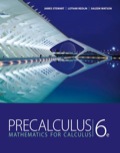
Concept explainers
To graph: The
Explanation of Solution
Given information:
The quadratic equation
Graph:
The graph of the quadratic equation
Consider the quadratic equation,
Rewrite the given equation by square both sides:
Add both side of the equation
As the observation says this equation is an semicircle equation.
Either
Hence
Steps to plot the graph of the equation
Step 1: Press
Step 2: Use the down arrow key to reach
Step 3: Press
Step 4: Press
Step 5: Enter the function
Step 6: Press
For better view of graph.
Step 8: Press
The result obtained on the screen is provided below,
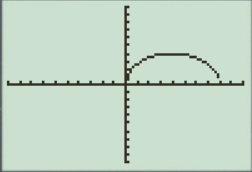
Interpretation:
The equation of the function
The equation has a semicircle graph.
The
The equation of circle is
The center of circle is either
Thus
Thus
a.
When the
Steps to plot the graph of the equation
Step 1: Press
Step 2: Use the down arrow key to reach
Step 3: Press
Step 4: Press
Step 5: Enter the function
Step 6: Press
For better view of graph.
Step 8: Press
The result obtained on the screen is provided below,
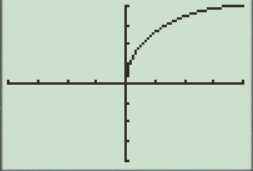
This window is not perfect viewing window.
b.
When the
Steps to plot the graph of the equation
Step 1: Press
Step 2: Use the down arrow key to reach
Step 3: Press
Step 4: Press
Step 5: Enter the function
Step 6: Press
For better view of graph.
Step 8: Press
The result obtained on the screen is provided below,
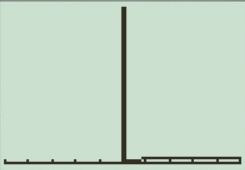
This window is not a perfect viewing window.
c.
When the
Steps to plot the graph of the equation
Step 1: Press
Step 2: Use the down arrow key to reach
Step 3: Press
Step 4: Press
Step 5: Enter the function
Step 6: Press
For better view of graph.
Step 8: Press
The result obtained on the screen is provided below,
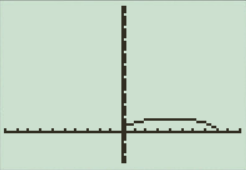
This is not the perfect viewing window.
d.
When the
Steps to plot the graph of the equation
Step 1: Press
Step 2: Use the down arrow key to reach
Step 3: Press
Step 4: Press
Step 5: Enter the function
Step 6: Press
For better view of graph.
Step 8: Press
The result obtained on the screen is provided below,

This window is the perfect viewing window.
So the perfect viewing window of the graph
The perfect viewing window is
Chapter 1 Solutions
EBK PRECALCULUS: MATHEMATICS FOR CALCUL
- A 20 foot ladder rests on level ground; its head (top) is against a vertical wall. The bottom of the ladder begins by being 12 feet from the wall but begins moving away at the rate of 0.1 feet per second. At what rate is the top of the ladder slipping down the wall? You may use a calculator.arrow_forwardExplain the focus and reasons for establishment of 12.4.1(root test) and 12.4.2(ratio test)arrow_forwarduse Integration by Parts to derive 12.6.1arrow_forward
- Explain the relationship between 12.3.6, (case A of 12.3.6) and 12.3.7arrow_forwardExplain the key points and reasons for the establishment of 12.3.2(integral Test)arrow_forwardUse 12.4.2 to determine whether the infinite series on the right side of equation 12.6.5, 12.6.6 and 12.6.7 converges for every real number x.arrow_forward
- use Corollary 12.6.2 and 12.6.3 to derive 12.6.4,12.6.5, 12.6.6 and 12.6.7arrow_forwardExplain the focus and reasons for establishment of 12.5.1(lim(n->infinite) and sigma of k=0 to n)arrow_forwardExplain the focus and reasons for establishment of 12.5.3 about alternating series. and explain the reason why (sigma k=1 to infinite)(-1)k+1/k = 1/1 - 1/2 + 1/3 - 1/4 + .... converges.arrow_forward
 Calculus: Early TranscendentalsCalculusISBN:9781285741550Author:James StewartPublisher:Cengage Learning
Calculus: Early TranscendentalsCalculusISBN:9781285741550Author:James StewartPublisher:Cengage Learning Thomas' Calculus (14th Edition)CalculusISBN:9780134438986Author:Joel R. Hass, Christopher E. Heil, Maurice D. WeirPublisher:PEARSON
Thomas' Calculus (14th Edition)CalculusISBN:9780134438986Author:Joel R. Hass, Christopher E. Heil, Maurice D. WeirPublisher:PEARSON Calculus: Early Transcendentals (3rd Edition)CalculusISBN:9780134763644Author:William L. Briggs, Lyle Cochran, Bernard Gillett, Eric SchulzPublisher:PEARSON
Calculus: Early Transcendentals (3rd Edition)CalculusISBN:9780134763644Author:William L. Briggs, Lyle Cochran, Bernard Gillett, Eric SchulzPublisher:PEARSON Calculus: Early TranscendentalsCalculusISBN:9781319050740Author:Jon Rogawski, Colin Adams, Robert FranzosaPublisher:W. H. Freeman
Calculus: Early TranscendentalsCalculusISBN:9781319050740Author:Jon Rogawski, Colin Adams, Robert FranzosaPublisher:W. H. Freeman
 Calculus: Early Transcendental FunctionsCalculusISBN:9781337552516Author:Ron Larson, Bruce H. EdwardsPublisher:Cengage Learning
Calculus: Early Transcendental FunctionsCalculusISBN:9781337552516Author:Ron Larson, Bruce H. EdwardsPublisher:Cengage Learning





